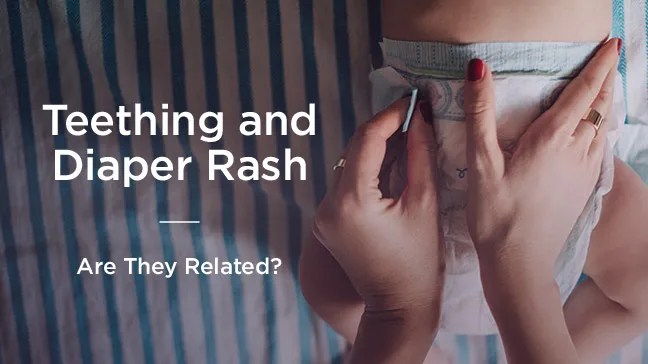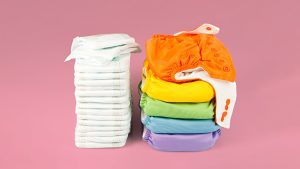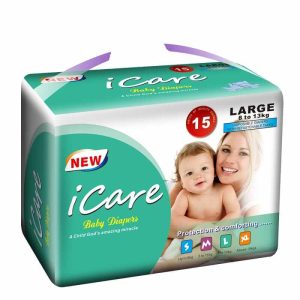Babies get diaper rash when teething due to increased saliva production and more frequent bowel movements. These factors can irritate their sensitive skin.
Teething is a challenging phase for babies and parents alike. Increased saliva production often leads to drooling, which can cause skin irritation around the mouth and diaper area. Babies may also experience more frequent bowel movements during this period. This combination of factors often leads to diaper rash.
Keeping the diaper area clean and dry is crucial to prevent irritation. Using a barrier cream can also help protect the sensitive skin. Regular diaper changes are essential to minimize exposure to moisture and irritants. Proper care and attention during teething can help alleviate the discomfort associated with diaper rash.
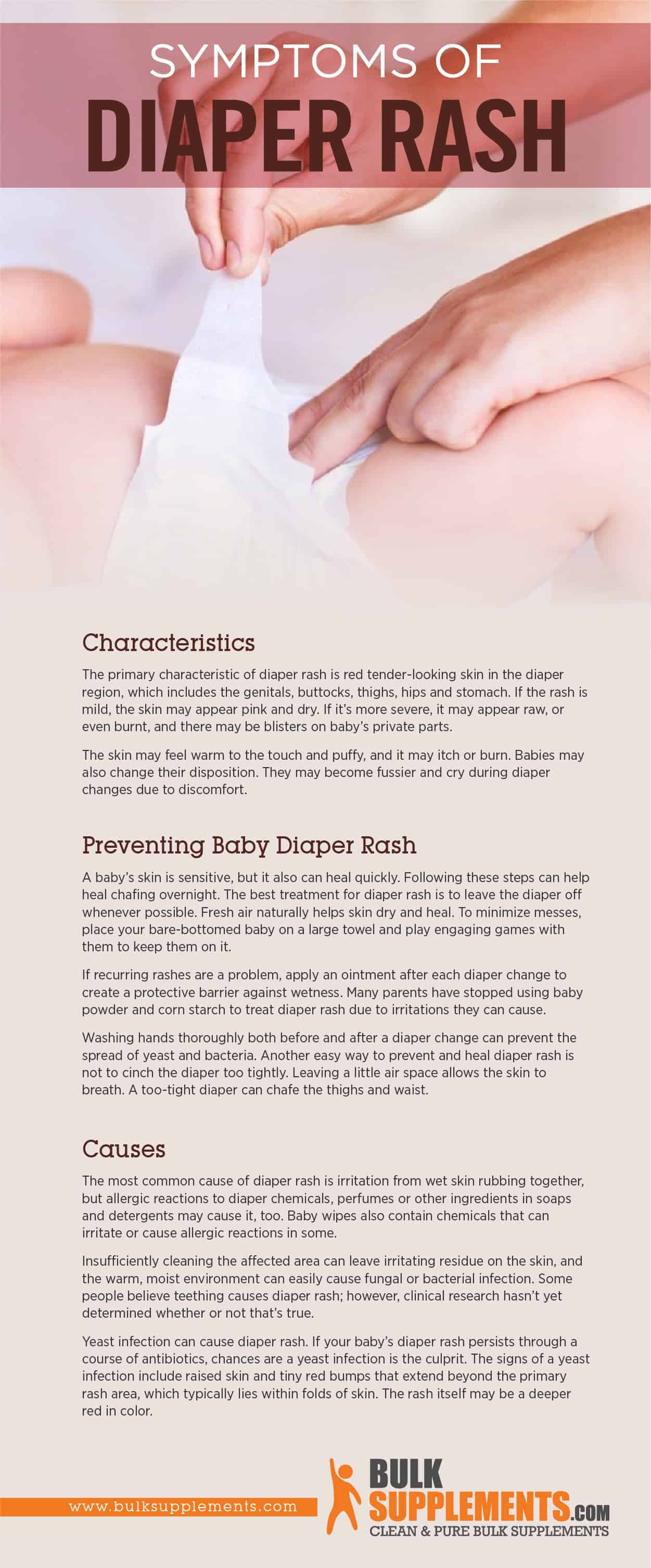
Credit: community.bulksupplements.com
Teething And Its Symptoms
Teething is a crucial milestone in a baby’s growth. It often brings discomfort and various symptoms. Understanding these signs can help parents manage this phase better. One surprising issue is diaper rash during teething.
Signs Of Teething
Knowing the signs of teething helps in early detection. Here are some common symptoms:
- Excessive drooling
- Chewing on objects
- Irritability or fussiness
- Swollen gums
- Decreased appetite
- Disturbed sleep
Each baby may show different combinations of these symptoms. Some might experience all, while others show only a few.
Common Teething Myths
Many myths surround teething. It’s essential to separate fact from fiction. Here are some common teething myths:
- Myth: Teething causes high fever.
Fact: Teething can cause a slight temperature rise, but not high fever. - Myth: Teething leads to diarrhea.
Fact: While it can cause loose stools, severe diarrhea is unlikely. - Myth: Babies should chew on hard objects.
Fact: Soft teething rings are safer and effective.
It’s important to rely on trusted sources for teething information. This ensures the well-being of your baby during this challenging time.
What Is Diaper Rash?
Diaper rash is a common skin irritation in babies. It appears as red, inflamed patches on a baby’s bottom. This condition can be uncomfortable for your little one. Understanding diaper rash can help in preventing and treating it effectively.
Causes Of Diaper Rash
Diaper rash has several causes. Here are the most common ones:
- Wet or dirty diapers: Prolonged exposure to urine or stool can irritate the skin.
- Chafing and rubbing: Tight diapers or clothing can cause friction.
- Yeast or bacterial infection: Warm, moist environments promote infections.
- New products: Certain baby wipes, detergents, or diapers can cause reactions.
- Solid foods: Dietary changes can alter stool, leading to rash.
- Antibiotics: Medications can disrupt the natural balance of bacteria.
Types Of Diaper Rash
There are different types of diaper rash. Identifying the type can help with treatment.
- Irritant Dermatitis: The most common type, caused by prolonged contact with wetness.
- Yeast Infection: Bright red rash with raised borders, caused by a fungal infection.
- Allergic Reaction: Red, inflamed skin due to an allergic response to products.
- Bacterial Infection: Painful, red bumps that may ooze pus, caused by bacteria.
- Intertrigo: Rash in skin folds, where skin rubs together and retains moisture.
Recognizing these types can aid in selecting the right treatment. Always consult a pediatrician for severe cases.
Link Between Teething And Diaper Rash
Many parents notice diaper rash when their baby is teething. The connection between teething and diaper rash is often discussed. Let’s explore the possible reasons and scientific studies behind this.
Possible Connections
Teething can cause drooling. Excessive drooling may lead to loose stools. Loose stools can irritate the baby’s skin, causing diaper rash.
- Increased Drooling: Teething babies drool more. This can lead to loose stools.
- Loose Stools: Loose stools can irritate the skin. This causes diaper rash.
- Weakened Immunity: Teething might weaken a baby’s immune system. This can make the skin more vulnerable to rashes.
Scientific Studies
Several studies have looked at the link between teething and diaper rash. Some studies suggest a connection. Others find no significant correlation.
| Study | Findings |
|---|---|
| Study A | Teething increases drooling and loose stools. This leads to diaper rash. |
| Study B | No direct link between teething and diaper rash found. |
Research results vary. But many parents report diaper rash during teething.
Role Of Excessive Drooling
Teething can be a challenging phase for babies. One common issue is diaper rash. You might wonder why teething leads to diaper rash. The answer often lies in excessive drooling. When babies teethe, they drool more than usual. This drool can contribute to diaper rash in surprising ways.
Impact On Skin
Excessive drooling can affect your baby’s skin. The drool can get on their hands. Babies often put their hands in their mouths. This means drool can end up on their diapers.
The constant moisture can irritate the skin. Wet skin is more prone to rashes. The enzymes in drool can also break down the skin’s barrier. This makes it easier for rashes to form.
Managing Drooling
Managing drooling can help prevent diaper rash. Here are some tips:
- Use bibs to keep your baby’s clothes dry.
- Wipe your baby’s face often to remove drool.
- Change diapers frequently to avoid wetness.
- Apply a barrier cream to protect the skin.
Avoiding certain foods can also help. Acidic foods can increase drooling. Try to limit these foods during teething.
Keeping your baby dry and comfortable is key. This will help reduce the chance of diaper rash. Remember, a happy baby means a happy parent!
Changes In Baby’s Diet
Many parents notice diaper rash during teething. A significant factor is the changes in a baby’s diet. As babies grow, they start exploring new foods. These dietary changes can impact their digestive system and skin.
New Foods Introduction
When babies begin teething, they often start eating solid foods. Introducing new foods can sometimes cause a diaper rash. New foods can change the acidity of a baby’s stool. Acidic stools can irritate the sensitive skin in the diaper area.
| Common Foods | Potential Irritants |
|---|---|
| Citrus Fruits | High Acidity |
| Tomatoes | High Acidity |
| Strawberries | High Acidity |
| Spicy Foods | Potential Skin Irritant |
Keep an eye on your baby’s reaction to new foods. If you notice redness or a rash, consider if recent foods might be the cause.
Allergic Reactions
Allergic reactions can also lead to diaper rash. When introducing new foods, monitor your baby for signs of allergies.
- Redness around the mouth
- Hives or rashes on the skin
- Swelling of the face or lips
- Diarrhea or vomiting
If you suspect an allergic reaction, consult your pediatrician. They can help identify the allergen and suggest alternatives. Being aware of food allergies can help manage and prevent diaper rash.
Weakened Immune System
Teething can be a challenging phase for babies and parents. One of the lesser-known effects of teething is a weakened immune system. This makes babies more susceptible to various health issues, including diaper rash.
Susceptibility To Infections
During teething, babies’ immune systems are often weaker. This makes them more prone to infections. Their bodies focus on pushing new teeth through the gums. This process diverts energy from the immune system. A weakened immune system leaves babies vulnerable. They are easily affected by bacteria and viruses.
Diaper rash can be one result of this weakened immunity. The skin becomes irritated due to frequent exposure to wetness. The weakened immune system struggles to fight off infections, leading to rashes.
Preventive Measures
Parents can take steps to prevent diaper rash during teething. Here are some effective measures:
- Change diapers frequently to keep the area dry.
- Use a barrier cream to protect the skin.
- Give your baby plenty of diaper-free time.
- Keep the diaper area clean using warm water and mild soap.
- Ensure your baby stays hydrated to maintain healthy skin.
These steps can help minimize the risk of diaper rash. Keeping the diaper area dry and clean is crucial.
| Preventive Measure | Benefit |
|---|---|
| Frequent Diaper Changes | Keeps the skin dry, reducing irritation. |
| Barrier Cream | Forms a protective layer on the skin. |
| Diaper-Free Time | Allows the skin to breathe. |
| Warm Water and Mild Soap | Cleans the area without causing irritation. |
| Hydration | Maintains skin health and resilience. |
Preventing Diaper Rash
Diaper rash can be a common issue for teething babies. Parents can take simple steps to prevent it. Cleanliness and the right treatments play a big role. The following tips can help keep your baby comfortable and rash-free.
Hygiene Practices
Keeping your baby’s diaper area clean is crucial. Change diapers frequently to avoid prolonged exposure to moisture. Use warm water and a soft cloth to clean the diaper area. Avoid using harsh wipes that contain alcohol or fragrances.
Let the diaper area air dry after cleaning. This reduces moisture and irritation. If possible, allow your baby some diaper-free time each day. This helps the skin breathe and stay dry.
Effective Treatments
If diaper rash appears, there are several effective treatments. Applying a thick layer of barrier cream can protect the skin. Look for creams containing zinc oxide or petroleum jelly.
Consider using an anti-fungal cream if you suspect a yeast infection. Sometimes, teething can cause changes in the baby’s stool, leading to yeast-related rashes.
Here is a quick reference table for common treatments:
| Treatment | Usage |
|---|---|
| Barrier Cream | Apply after each diaper change |
| Anti-fungal Cream | Use if yeast infection is suspected |
| Warm Water Cleaning | Clean diaper area gently |
| Diaper-Free Time | Allow skin to breathe daily |
Implementing these practices can help prevent diaper rash. Keep your baby’s skin healthy and comfortable during the teething phase.
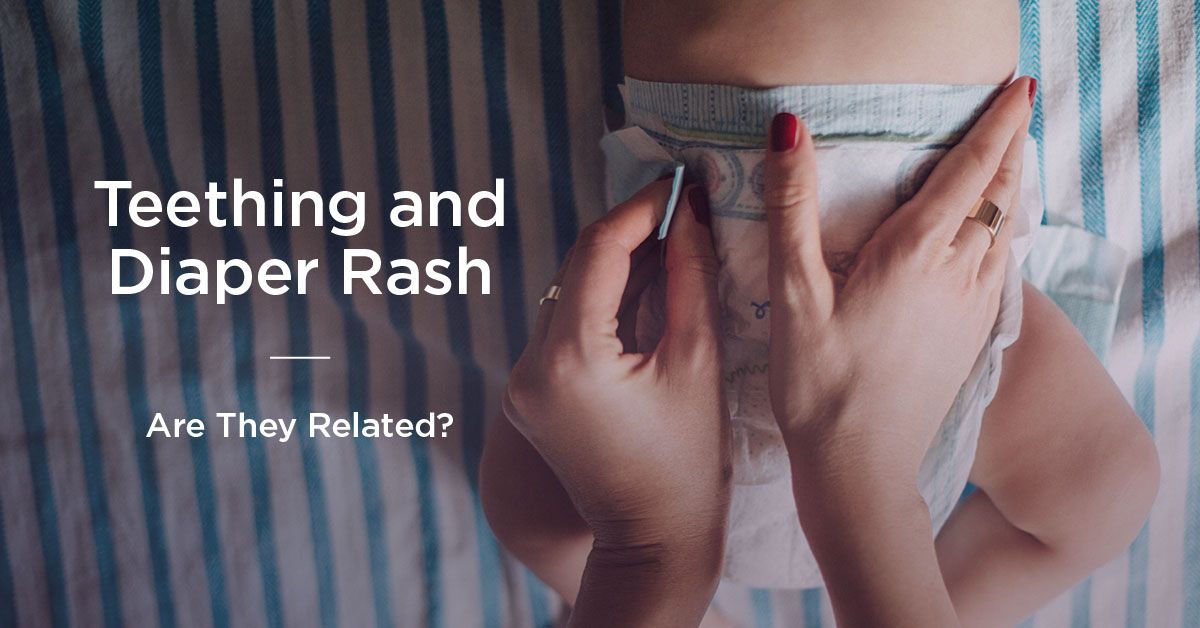
Credit: www.healthline.com
When To Consult A Doctor
Teething can be tough for both babies and parents. While diaper rash is common, there are times you should see a doctor. Recognizing severe symptoms early can prevent complications. Let’s dive into when you need medical advice.
Severe Symptoms
It’s important to know the signs of severe symptoms in diaper rash. Look for these indicators:
- Rash covers a large area
- Blisters or open sores
- High fever
- Pus or yellow fluid
- Baby is in visible pain
If you see any of these symptoms, consult a doctor immediately. Delaying could lead to further complications and discomfort for your baby.
Long-term Effects
Ignoring severe diaper rash can have long-term effects on your baby’s health. Here are some risks:
- Skin infections
- Scarring
- Allergic reactions
Chronic rash can affect your baby’s skin sensitivity. Early intervention is crucial to prevent these issues.
| Symptom | Action |
|---|---|
| Blisters or sores | Consult a doctor |
| High fever | Seek immediate medical help |
| Pus or yellow fluid | Doctor’s visit needed |
Teething and diaper rash can be tough, but don’t ignore signs of severe symptoms. Always consult a doctor for long-term health and comfort.

Credit: www.blueberrypediatrics.com
Frequently Asked Questions
Can Teething Cause Diaper Rash In Babies?
Yes, teething can cause diaper rash in babies. Teething leads to excess saliva, which can irritate the skin. This may result in a diaper rash.
How Does Teething Lead To Diaper Rash?
Teething increases saliva production, which can be swallowed and passed through the digestive system. This makes stools more acidic, causing diaper rash.
What Are The Symptoms Of Teething Diaper Rash?
Symptoms include red, inflamed skin in the diaper area. It may also be tender and uncomfortable for your baby.
How Can I Prevent Teething Diaper Rash?
Change diapers frequently and keep the area dry. Use a barrier cream to protect your baby’s skin from irritation.
Conclusion
Understanding the link between teething and diaper rash helps parents provide better care. Teething increases saliva, which can cause diaper rash. Keep your baby’s skin clean and dry. Regular diaper changes and gentle skincare can prevent discomfort. Stay vigilant and consult a pediatrician if needed.
Happy teething and rash-free days ahead!

